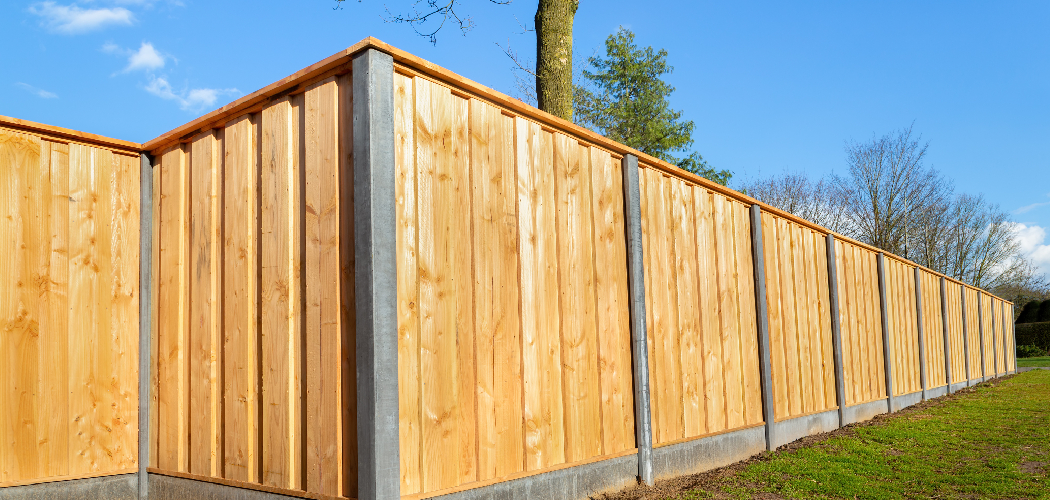Determining property lines before installing a fence is a crucial step in safeguarding your investment and maintaining good neighborly relations.
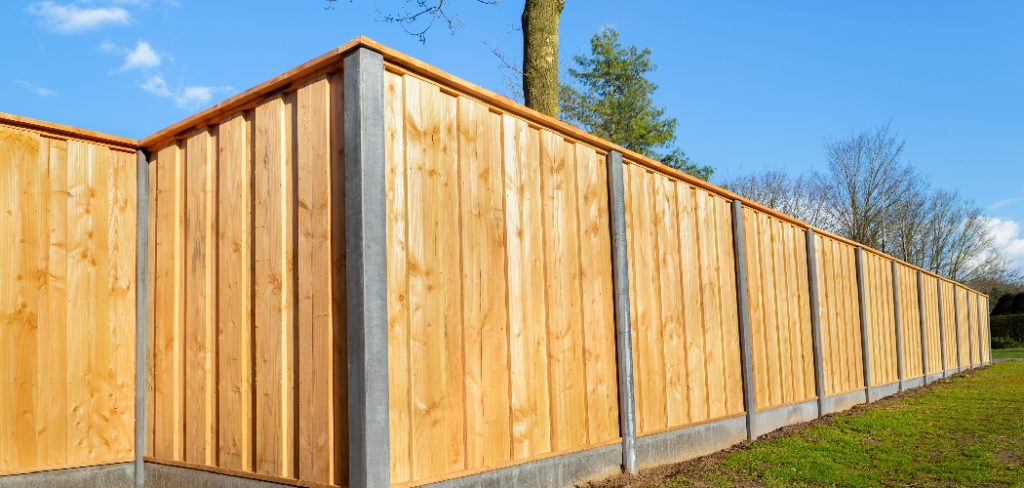
A clear understanding of your property boundaries ensures that your fence will be placed legally and accurately, avoiding potential disputes or the need for costly relocations.
This guide on how to determine property lines for fence will walk you through the essential steps and considerations for identifying your property lines, from examining official documents to conducting physical surveys, ensuring a smooth and compliant fencing project.
Why Are Property Lines Important for Fencing?
Property lines serve as the legal boundaries between neighboring properties. These lines are established and maintained by local governments through official documents such as surveys, deeds, and plats.
Understanding your property lines is crucial in fencing because it determines where you can place your fence without encroaching on your neighbor’s land or violating any zoning or building codes.
Moreover, determining accurate property lines can also prevent potential legal issues that may arise from disputed boundaries. It also ensures that you are not inadvertently taking away usable land from your neighbors or being taken advantage of by others.
Knowing your property lines gives you the information and protection needed to confidently proceed with your fencing project.
Needed Materials
Property Deed or Plat Map:
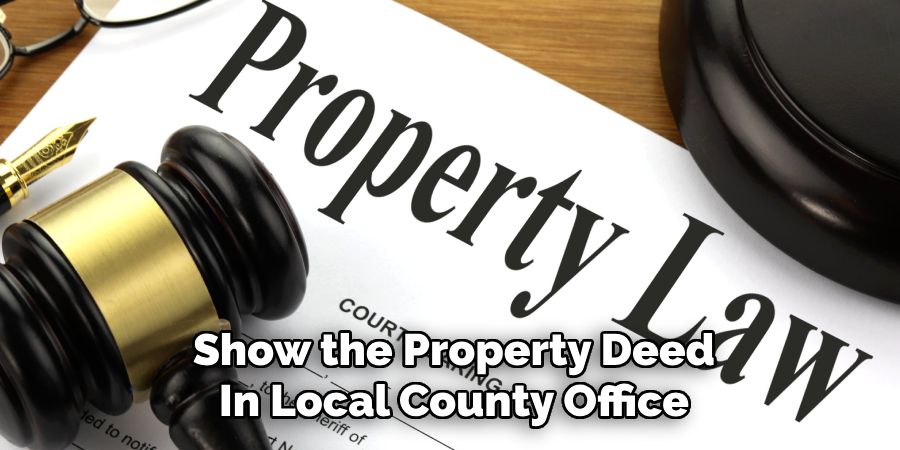
Your property deed or plat map is the legal document that outlines your property lines and boundaries.
It should have been provided to you when you purchased your property, but if you cannot locate it, you can obtain a copy from your local county office or land registry.
Surveyor’s Report:
A surveyor’s report provides an accurate and detailed representation of your property lines. It includes precise measurements and markings of your property boundaries, as well as any existing structures or encroachments.
Tape Measure:
A tape measure will be essential for measuring distances accurately on your physical property. Make sure to use a sturdy and reliable tape measure for precise results.
Flags or Stakes:
Flags or stakes are used to physically mark your property lines, making it easier to visualize and identify the boundaries. These can be purchased from hardware stores or online.
9 Step-by-step Guidelines on How to Determine Property Lines for Fence
Step 1: Obtain Your Property Deed or Plat Map
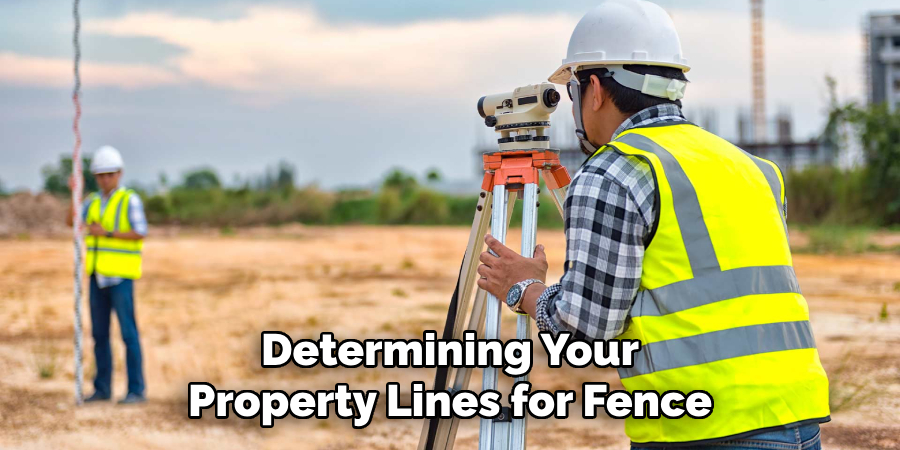
The first step in determining your property lines for fence installation is to obtain your property deed or plat map. These documents are critical as they legally outline the boundaries of your property.
When you purchased your property, you should have received a copy of the deed or plat map. If you cannot find them, you can request a copy from your local county office or land registry.
The property deed will provide a written description of your property’s boundaries, while the plat map offers a visual representation.
Having these documents in hand will give you the foundational information needed to accurately establish your property lines and proceed with planning your fence installation.
Step 2: Review Your Deed or Plat Map
Once you have your property deed or plat map, review them carefully to understand the boundaries. Look for any language that describes specific boundary markers, such as trees, fences, or roadways.
These will serve as helpful references when conducting physical surveys on your property.
Additionally, pay attention to any notes or disclaimers on your documents that may affect your property lines. For example, there may be an easement granted to utility companies for access to certain areas of your property. Understanding these details is crucial in establishing accurate property lines.
Step 3: Check for Existing Boundary Markers
Before conducting any physical surveys on your property, take a walk around your land to see if there are already existing boundary markers. These could include fences, trees, or rocks that have been placed by previous owners or neighboring properties.
While these may not be legally binding as property boundaries, they can serve as good visual references and give you an idea of where your property lines may lie. It’s essential to note that these markers may not always be accurate; therefore, it’s crucial to conduct a physical survey for precise measurements.
Step 4: Hire a Professional Surveyor
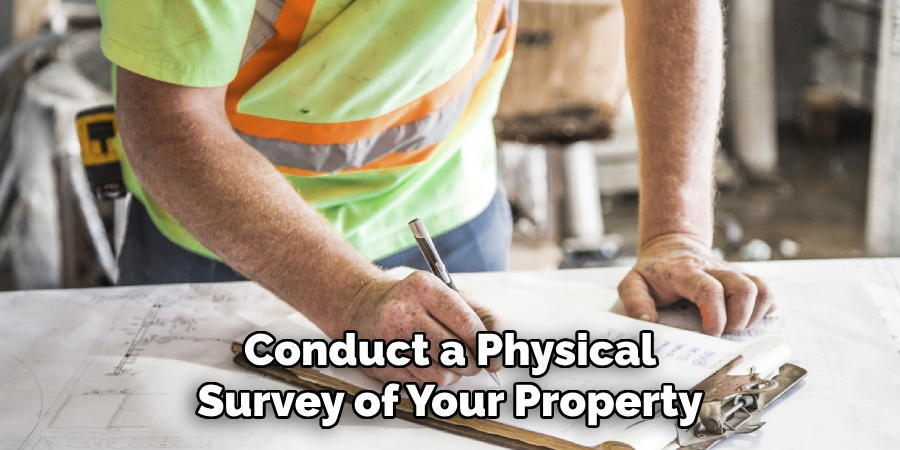
For the most accurate and legally binding representation of your property lines, it’s highly recommended to hire a professional surveyor. A licensed surveyor will have the necessary expertise and equipment to conduct a thorough physical survey of your property.
They will take precise measurements and mark your boundaries using flags or stakes. This may come with a cost, but it ensures that there won’t be any disputes or legal issues down the road.
Step 5: Prepare for the Physical Survey
Before the surveyor arrives, make sure to remove any obstacles that may hinder their access to certain areas of your property. Clear away debris and overgrown vegetation and unlock any gates that may block their way.
Also, make sure to have your property deed and plat map ready for the surveyor to reference. This will help them verify and confirm the boundaries outlined in these documents.
Step 6: Walk the Property with the Surveyor
As a homeowner, it’s essential to walk your property with the surveyor during their physical survey. This allows you to ask questions, clarify any concerns, and learn more about your property lines.
The surveyor will use various tools such as measuring tape, GPS systems, and other equipment to conduct their survey. They will also mark your boundaries using flags or stakes for visual reference.
Step 7: Make a note of any Encroachments
During the physical survey, the surveyor may identify any existing structures or encroachments that may be present on your property. These can include fences, sheds, or even parts of a neighbor’s yard that are on your land.
Make sure to take note of these encroachments, as they may impact where you can place your fence and could potentially cause legal issues if not addressed properly.
Step 8: Confirm Measurements and Boundaries
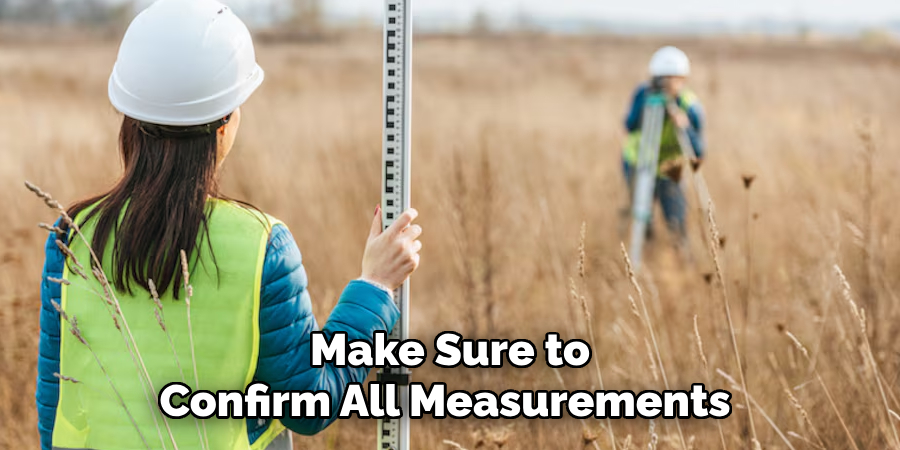
Once the physical survey is complete, make sure to confirm all measurements and boundaries with the surveyor. Ask for a detailed report outlining their findings, and make sure to keep this document on file for future reference.
If there are any discrepancies or concerns with the surveyor’s report, make sure to address them promptly to avoid issues during fence installation.
Step 9: Mark Your Boundaries with Flags or Stakes
Finally, use flags or stakes to physically mark your property lines as outlined by the surveyor’s report. This will provide a visual reference when planning and installing your fence. Make sure to communicate with your neighbors about the boundaries, especially if it may affect their property as well.
By following these steps on how to determine property lines for fence, you can accurately determine your property lines for fence installation.
Remember to always consult with professionals and refer to legal documents for the most accurate and reliable results. With clearly defined boundaries, you can proceed with confidence in planning your fence installation project.
So whether you’re looking to add a new fence or replace an existing one, these guidelines will help ensure that it is installed within your property lines accurately and legally. Happy fencing!
Do You Need to Get Help From a Professional Surveyor?
Deciding whether to hire a professional surveyor can be an important consideration in your fencing project.
While some property owners may feel confident in determining their boundaries using deeds, plat maps, and existing markers, there are several compelling reasons to consider professional assistance.
A licensed surveyor has the expertise and precise tools required to establish your property lines accurately, ensuring you avoid any disputes or legal issues with neighboring properties.
Surveyors can also uncover easements or encroachments that might not be clearly outlined in your documentation, providing a thorough understanding of any limitations on your property.
Furthermore, their services come with a detailed report that can be kept for future reference, adding an additional layer of legal protection.

Although hiring a surveyor involves an expense, the peace of mind and security it offers can make it a worthwhile investment, particularly for significant projects like fence installation.
Frequently Asked Questions
Q: Can I Rely on My Property Deed and Plat Map to Determine My Property Lines?
A: While your property deed and plat map can provide a good starting point for determining your property lines, they may not always be accurate. These documents are created based on information provided by previous landowners and may not reflect any changes or discrepancies that have occurred over time.
Q: How Accurate Are Professional Surveys?
A: Professional surveys are considered the most accurate representation of property lines. Licensed surveyors use precise measuring tools and techniques to ensure their findings are as accurate as possible. However, it’s essential to note that all surveys come with a margin of error, typically ranging from 1-5 feet.
Q: Will Hiring a Professional Surveyor Cause Issues with My Neighbors?
A: While hiring a professional surveyor may uncover discrepancies or encroachments on neighboring properties, it’s important to remember that their primary goal is to accurately determine your property lines.
Communicating openly and respectfully with your neighbors about any potential issues discovered during the survey can help avoid conflicts and maintain good relationships.
Q: Can I Install My Fence Slightly Beyond My Property Line?
A: It’s crucial to adhere to your property lines when installing a fence. Encroaching on neighboring properties can lead to legal disputes and create issues down the road. If you need additional space for your fence, consider adjusting the design or seeking permission from your neighbors.
Conclusion
In conclusion, accurately determining your property lines is a critical step in any fencing project. By following these guidelines on how to determine property lines for fence, from researching property records to potentially hiring a professional surveyor, you can ensure that your fence is installed legally and within your boundaries.
This not only helps avoid potential legal disputes but also provides peace of mind, knowing that you respect both your property and your neighbors’ property.
With clearly defined property lines, your fencing project will be set up for success, allowing you to enjoy the benefits of your new or improved fence without concerns. Happy fencing!

